-
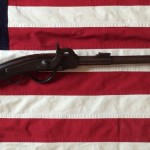
-
1864 Gywn & Campbell Carbine, Type II
-
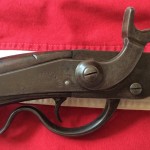
-
1864 Gywn & Campbell Carbine, Lock Plate & Hammer
-
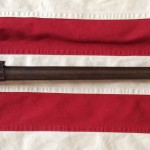
-
1864 Gywn & Campbell Carbine, Barrel
-
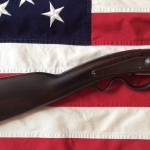
-
1864 Gywn & Campbell Carbine, Shoulder Stock
-
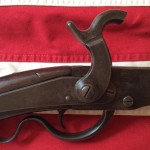
-
1864 Gywn & Campbell Carbine, Cocked Hammer
-
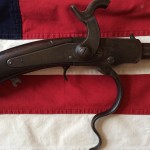
-
1864 Gywn & Campbell Carbine, Trigger Guard Lever
-
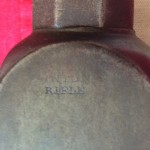
-
1864 Gywn & Campbell Carbine, Union Rifle
-
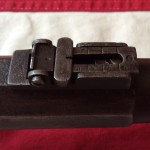
-
1864 Gywn & Campbell Carbine, Rear Sight
-
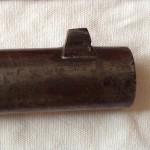
-
1864 Gywn & Campbell Carbine, Front Sight
-
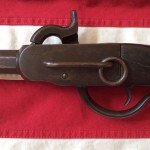
-
1864 Gywn & Campbell Carbine, Saddle Ring
I’ve been tardy in posting photo’s of weapons I’ve written about, but I’ve been so busy at work and home that it’s not allowing me to write, photo and document as much as I’d like to so I apologize for that. The next weapon in the Civil War Arsenal that I’ll be writing about is the 1864 Type II Gwyn and Campbell Carbine. One of the more interesting looking weapons of the Civil War. There were actually 3 versions of this carbine. The first was the 1862 Cosmopolitan of which 1140 carbines were manufactured, next was the 1863 Gwyn and Campbell Type I, 4200 of these carbines were manufactured and finally the 1864 Type II Gwyn and Campbell of which 4002 carbines were manufactured. A total of 9342 carbines were purchase by the Ordnance Dept. for the sum of $197,320.00 as well as 6,300,000 linen cartridges for $132,007.27. The Cosmopolitan (Gwyn and Campbell) gets its name from the manufacturer, Cosmopolitan Arms Company of Hamilton, Ohio. It is also known as the ‘’Gwyn and Campbell” for the owners of the Cosmopolitan Arms Co. “Grapevine” because of the snake like curves in the trigger guard lever and long hammer; “Union Rifle” for the markings on the frame; “Ohio” for the state in which it was manufactured; and “Gross” for the inventor. The inventor, Henry Gross received U.S. Patent #25,259 on August 30, 1859 for the Cosmopolitan carbine. In 1860 the carbine was tested by Erskine Allin, the Master Armourer at the Springfield Armory, and again on June 9, 1860 by the Navy at the Naval Yard Washington with overall success. The actual manufacturing of the carbine was in Hamilton, Butler County, Ohio at the Cosmopolitan Arms Company which had been established in 1860. The firm’s owners were Edward Gwyn and Abner C. Campbell. The first wartime order for the Cosmopolitan carbine was requested by Illinois Governor Richard Yates through his State Quartermaster General’s headquarters at Springfield, Ill. Quartermaster General John Wood in a letter to Major Hagner dated December 12, 1861, requisitioned the Cosmopolitan Carbines for the Governor’s Legion. This letter introduced Edward Gwyn to Major Hagner so that Gwyn could obtain the order to furnish the Cosmopolitan for the Governors troops. Major Hagner in turn contacted General Ripley asking approval to give the order to Mr. Gwyn for 1,140 carbines plus appendages at $27.00 each with delivery in 60 days. The linen cartridge used a .52 caliber bullet weighting 390 grains and using 40 grains of powder, the overall length of the cartridge was 1.63 inches. The overall length of the carbine was 39 inches and it weighed 6 pounds 9 ounces. It does not have a fore stock and all carbines are marked UNION/RIFLE on the right side of the frame. The 19 inch blue barrel has a 3 ½ inch octagon section at the breech; with an iron blade front sight and a folding leaf rear sight graduated to 900 yards (type II versions have a 600 yard graduated rear sight). All major parts are serial numbered and also have an assembly number. The delivery on December 31, 1864 closed out the Gwyn and Campbell contracts during the Civil War. Many Calvary Regiments were issued the Gwyn and Campbell with a few being the 2nd and 3rd Arkansas; 5th, 6th and 16th Illinois; 3rd and 4th Indiana’s; 4th and 8th Iowa; 2nd, 6th and 14th Kansas; 10th, 12th, 14th and 40th Kentucky; 4th and 8th Missouri; 5th and 8th Ohio; 7th Tennessee; and the 3rd Wisconsin. In response to the 1863-1864 Ordnance Dept. survey of officers in the field using the various carbines, 37 officers commented on the Cosmopolitan with 23 considering it fully satisfactory and 14 considering it worthless. The major problem was found to be in the action of the breech mechanism. So that brings me to my 1864 Gwyn and Campbell Type II, which is in good condition. It does have a repair to the stock which is hardly noticeable, aside from that everything else is fine. The bluing on the barrel has worn off over the years but that just adds to the character of the weapon. All of the markings are legible and the action is perfect. The rear sight is the 600 yard graduated style and it has a sling ring on the left side. The serial # is in the 3500 range and the assembly number is 42. I’d like to thank John D. McAulay for all the great research he’s done. Without his book “Carbines of the Civil War” I would not be able to write this article in such detail.










